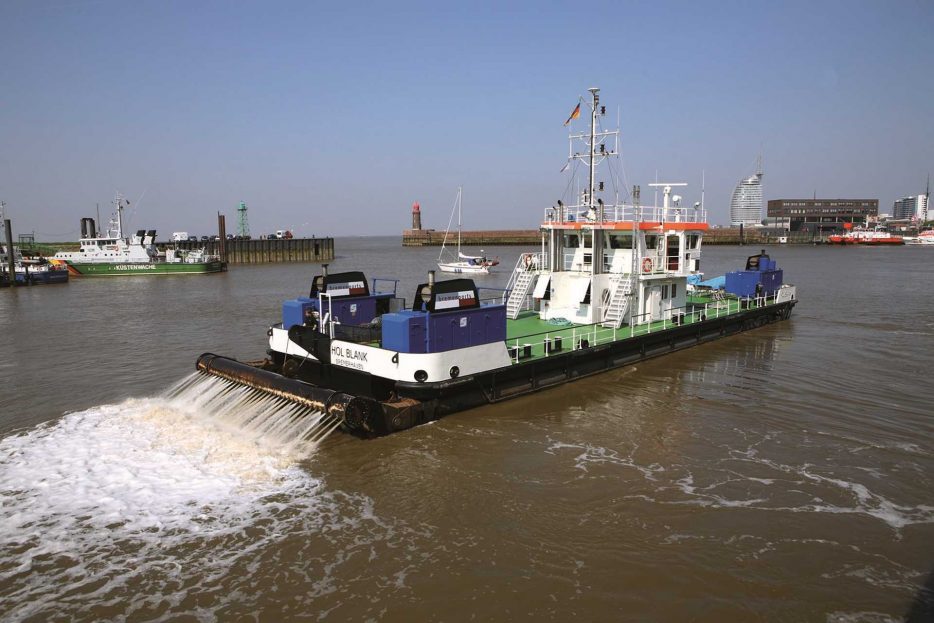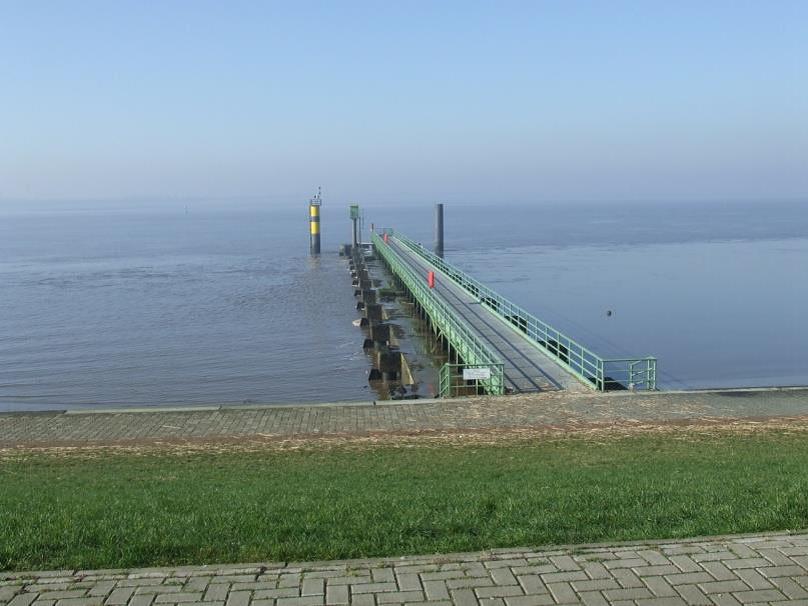Sustainable water-depth-management
Reliable water depths are essential to guarantee 100% port availability. Various technical procedures are used to remedy or avoid insufficient water depths, depending on the individual location and operating circumstances. We endeavour to interfere with nature as little as possible and to minimise negative impacts, such as destroying bottom-dwelling creatures, reducing oxygen levels in the water, mobilising pollutants and driving away fish and mammals.
Our two water injection devices “Hol Blank” and “Hol Deep” avoid sedimentation by keeping sediment in suspension to reduce deposition. This enabled us to reduce the dredged volumes both at the outer ports of Bremerhaven as well as the port areas in the city of Bremen by an estimated 600,000 m3 per annum. A top-up channel in Bremerhaven also diverts low-particulate water from the surface of the Weser into the harbour basins, reducing the dredged volumes at the port area behind the locks in Überseehafen by an estimated 150,000 m3 per annum. The “Hafenkanal” in the city of Bremen has been closed, which also reduces the dredging volume by approx. 120,000 m3 per annum.
Despite the water injection devices and top-up channel, however, it is not possible to prevent the deposition of suspended particles entirely. It is therefore important to monitor the water depths in the port continuously and document any low water areas. Bremen’s Port Authority specifies the dredging requirements, but bremenports is responsible for eliminating any shallows with bucket dredgers. The subsequent (and correct) disposal of the dredging material depends primarily on the level of contamination.
870,000 m³ of dredging material can be avoided on average every year thanks to our sustainable water-depth-management by water injection devices, the top-up channel and closing the “Hafenkanal” in the city of Bremen

